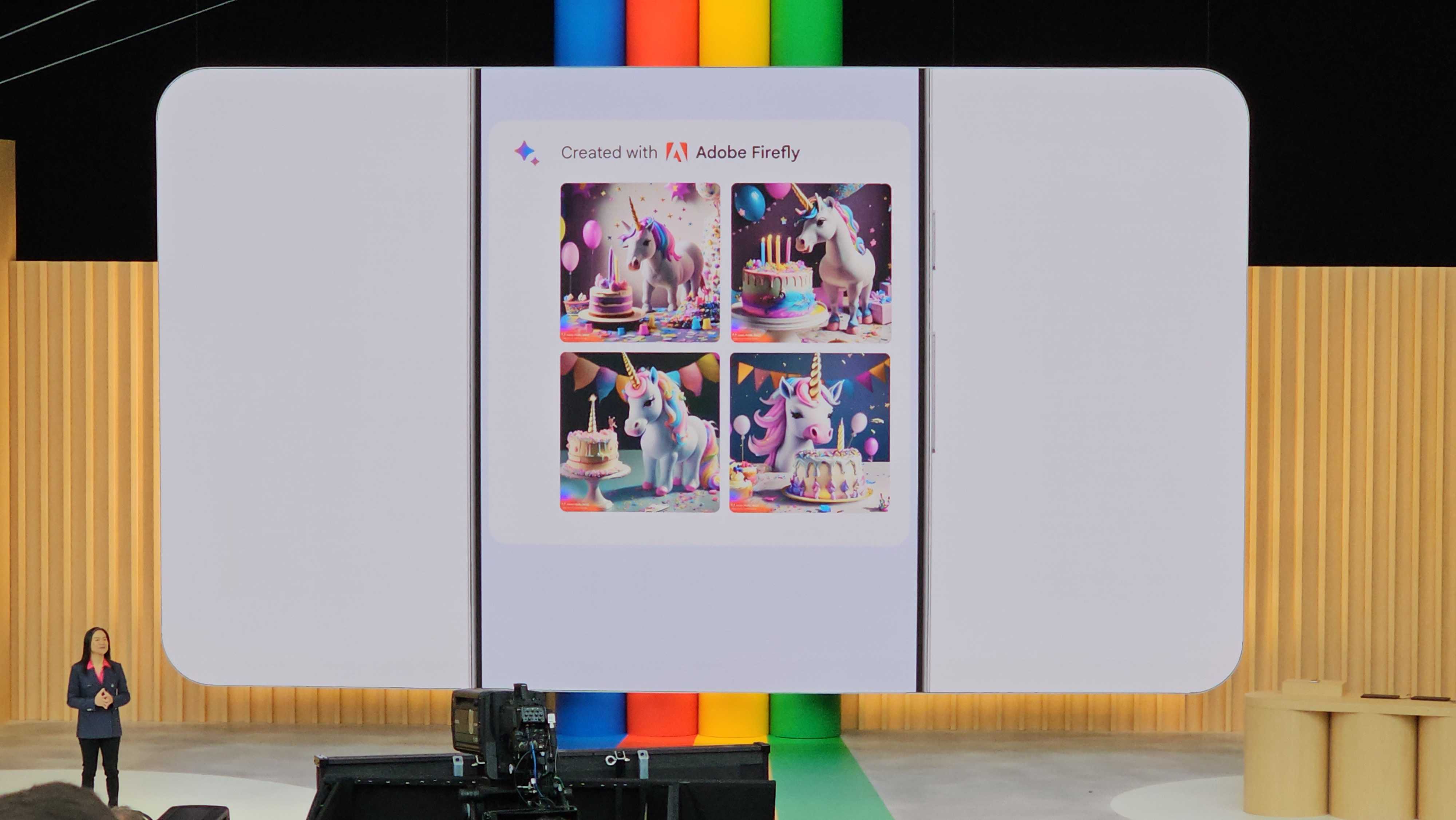Google Bard is getting an Adobe-powered AI image generator upgrade
Bard will work with Adobe Firefly to generate images from text

Google I/O has revealed a much-needed update for the company’s Bard AI chatbot that will help it take on Microsoft's Bing AI. Thanks to a collaboration with Adobe, Google Bard will soon be able to generate images from text responses - images that users can then further edit in Adobe Express.
The announcement came during Google’s big I/O event and we’re sure Bard fans are hyped to see the chatbot get a feature boost that should help the quirky bot take on Bing. Bing AI has been able to make images for a while now thanks to its DALL-E integration, so this was the natural next step for Bard.
Google and Adobe will be approaching the new feature using the Content Authenticity Initiative, an open-source Content Credentials technology that will bring transparency to images that are generated through this integration.
The whole thing is made possible through Abobe Firefly, a family of creative generative AI models that will make use of Bard's conversational AI service to power text-to-image capabilities. Users of all skill levels and experiences will be able to describe their exact vision to Bard, which will then generate images with Firefly.
The images will be created within Bard, so rather than using the chatbot to help you come up with prompts, then hopping over to Midjourney or DALL-E to produce images, Bard users will now be able to fine-tune prompts and generate artwork all in one place.
Too little, too late?
Adding AI image generation into Bard was a must given that the chatbot has had a rather mediocre launch and reception so far - and that its key rival Bing already has a similar skill.
However, AI image generation is controversial for several reasons, with some artists unhappy that these new tools have been trained on existing artworks. There are also concerns over how obvious it is to users that an image is AI generated, rather than 'real'. Google seems to be taking a neutral route here, and will tag images generated by Bard, so that there is (hopefully) no confusion as to an image's provenance.
Get daily insight, inspiration and deals in your inbox
Sign up for breaking news, reviews, opinion, top tech deals, and more.
Some might argue that Google’s decision to partner with Adobe Firefly is surprising, given that its image generator is still in beta and isn't yet as well known as the likes of Midjourney. However, Midjourney is also still in beta, so we can’t say it’s a bad move.
When we’re talking about the best AI art generator, there’s a general consensus that Bing AI's DALL-E 2-powered option takes the cake - we had a quick look, and our fellow tech-heads over at ZDNet agree. Midjourney, of course, is a close second and still holds the top spot for a lot of creators, but either way this suggests that Google Bard will have some catching up to do.
Bard had a rocky start upon release and has a lot to prove if it wants to compete with Bing Chat. Microsoft has had a lot more time to build up a solid user base - and it'll take a lot to bring Bard up to the same position.
Bard isn't Google's only generative AI. It recently announced MusicLM for generating AI music, here's how you can sign up and use MusicLM for yourself.

Muskaan is TechRadar’s UK-based Computing writer. She has always been a passionate writer and has had her creative work published in several literary journals and magazines. Her debut into the writing world was a poem published in The Times of Zambia, on the subject of sunflowers and the insignificance of human existence in comparison. Growing up in Zambia, Muskaan was fascinated with technology, especially computers, and she's joined TechRadar to write about the latest GPUs, laptops and recently anything AI related. If you've got questions, moral concerns or just an interest in anything ChatGPT or general AI, you're in the right place. Muskaan also somehow managed to install a game on her work MacBook's Touch Bar, without the IT department finding out (yet).